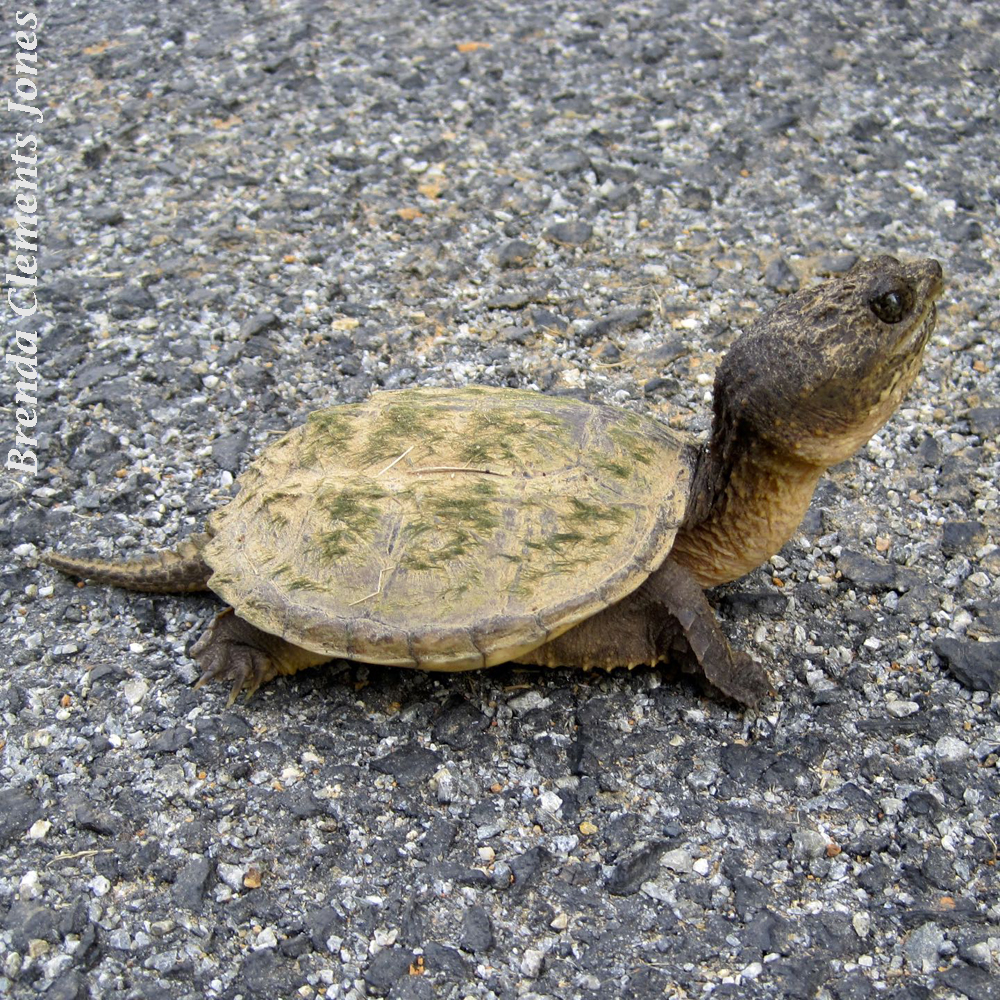
Much to my surprise it just showed up one day on a path behind my cabin. A tiny Common Snapping Turtle (Chelydra serpentina). They have a reputation as having a combative disposition but this creature was so little I could hardly think of it in those terms.

A short distance from where I first saw this little critter is where I saw him the second time, in my little man-made pond. And from then on, for five years it was a constant resident of the little pond.

Common Snapping Turtles eat a wide variety of things. Insects, spiders, worms, fish, frogs, small turtles, snakes, birds, crayfish, small mammals, and carrion. But their diet is mainly plant material.

These turtles are almost entirely aquatic and spend nearly all their time in water. They’ll emerge and roam on land during mating season and to lay eggs. That’s about it.

Twenty to forty ping-pong ball-sized eggs are laid in May or June in a shallow depression dug by the female turtle using her hind legs. She choses a well-drained, sunny location for the nest which she covers after laying her eggs and returns to the water.

The sex of these turtles is determined after fertilization. The temperature of the developing eggs is what decides whether the baby turtles will be male or female. Eggs in an environment of 68°F produce only females; eggs maintained at 70-72°F produce both male and female turtles; and those kept at 73-75°F produce only males.
I don’t know what happened to that first little Common Snapping Turtle. Maybe one day another will come by to take up residence in my pond.
